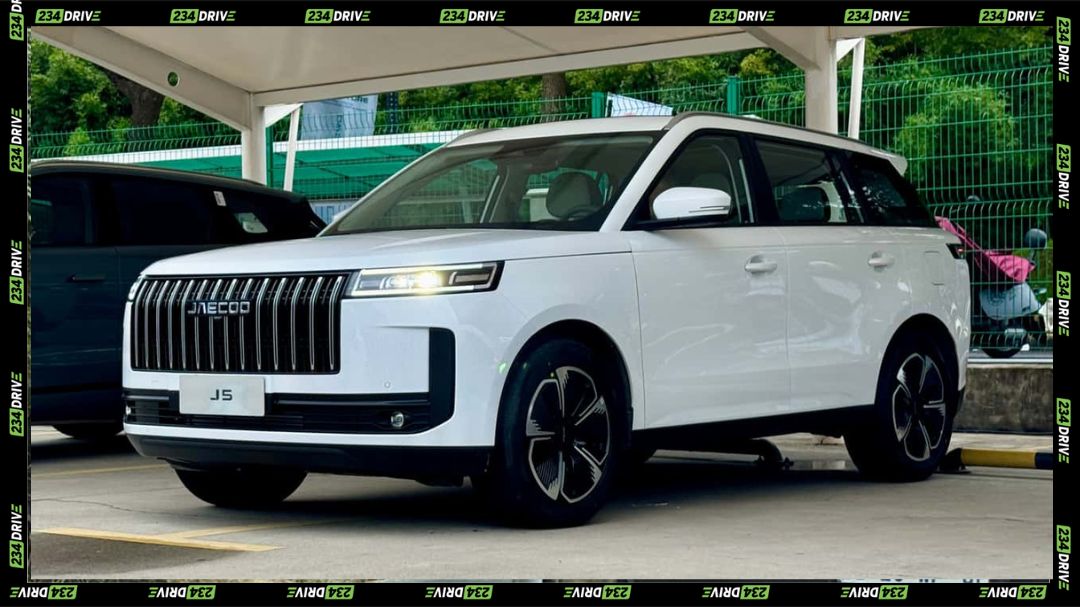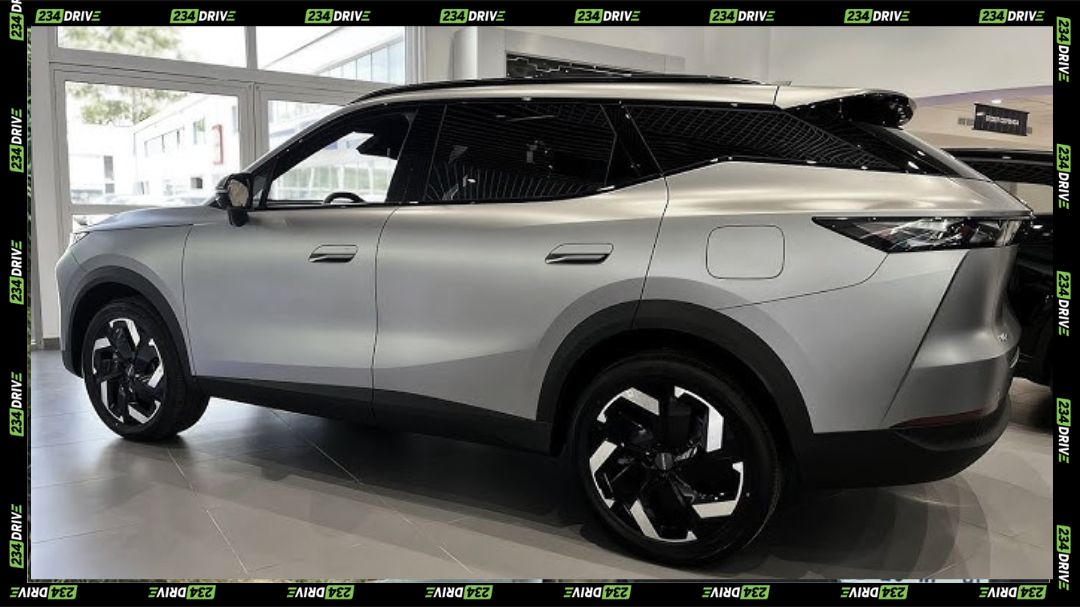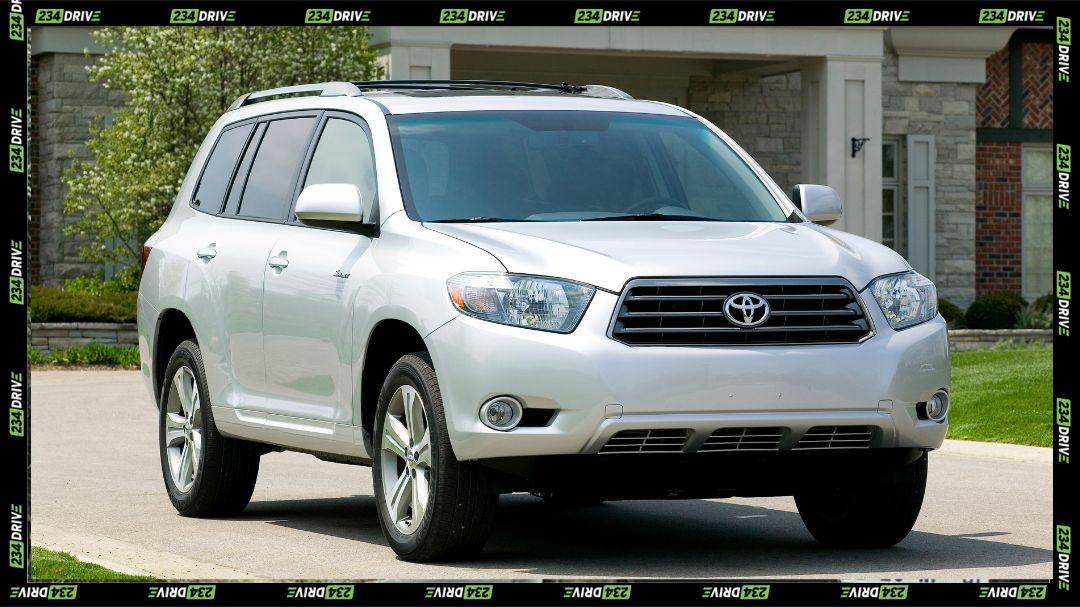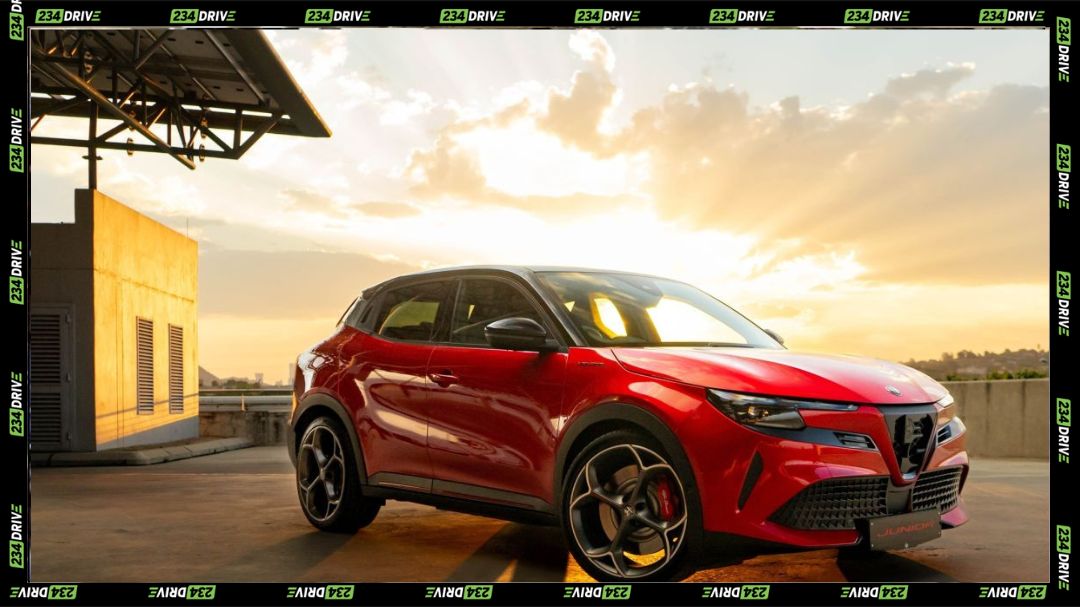The 2014 Toyota Highlander stands as one of the most popular midsize SUVs for families, offering an excellent balance of comfort, practicality, and long-term reliability. Toyota’s reputation for durability ensures that this model remains a sought-after option in the used car market, particularly in Nigeria where Toyota dominates consumer preference. With space for up to eight passengers, a refined ride, and a choice between efficient four-cylinder, powerful V6, or hybrid configurations, the Highlander caters to different lifestyle needs and budgets.
Beyond its strong mechanical foundation, the 2014 Highlander’s third-generation redesign brought a modern and aggressive exterior, higher-quality interiors, and advanced safety features that made it competitive against rivals like the Honda Pilot, Ford Explorer, and Hyundai Santa Fe. Nigerian buyers often lean towards this model for its balance between premium appeal and ease of maintenance, despite some concerns around fuel consumption and minor electrical issues.
Exterior Design and Road Presence
The 2014 Highlander debuted with a sharper, more muscular design compared to its predecessors. Its longer body (191.1 inches) and wider stance (75.8 inches) gave it a bold road presence, while the large trapezoidal grille and sleek projector-style headlights modernised its look. Subtle chrome accents on higher trims and available 19-inch alloy wheels added a premium touch. The Limited trim also offered a panoramic sunroof, elevating its road appeal.
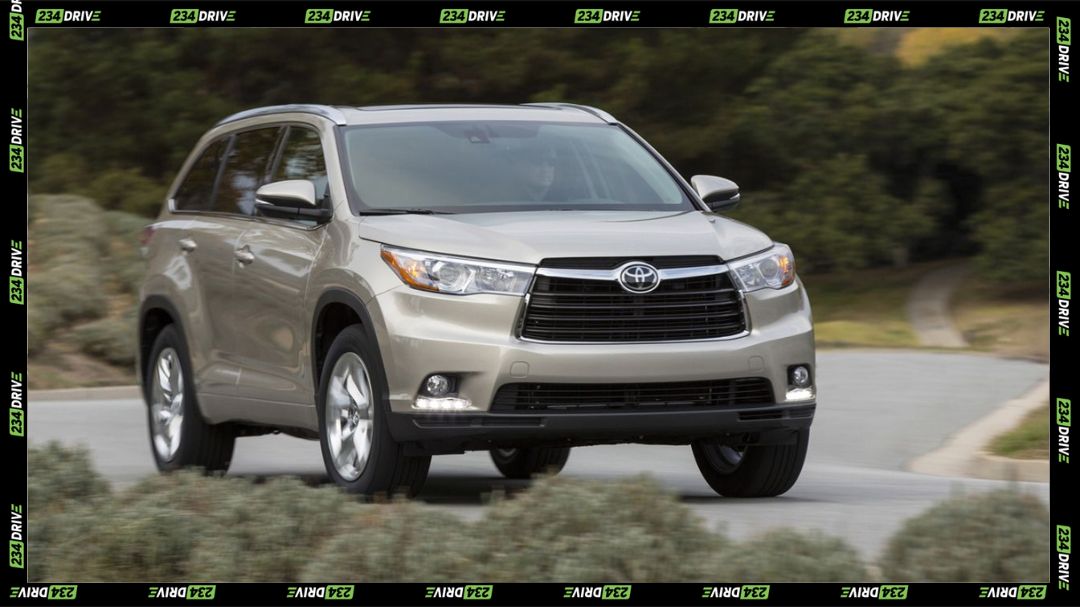
Despite its refined appearance, the Highlander was never built for hardcore off-road adventures. Its unibody construction prioritises comfort and stability, making it better suited for urban driving and long-distance highway cruising—ideal for Nigeria’s mix of city commutes and inter-state trips. Ground clearance stands at 8 inches, enough to handle light rural roads but not extreme terrains.
Interior Comfort and Technology
Inside, the Highlander impresses with practicality and comfort. The cabin features high-quality materials, with the XLE and Limited trims offering leather upholstery, wood-like accents, and soft-touch finishes. The second row comes with either a sliding bench or captain’s chairs, while the third row—though best for children—adds versatility. With all seats folded, cargo capacity extends to 83.7 cubic feet, making it a strong family hauler.
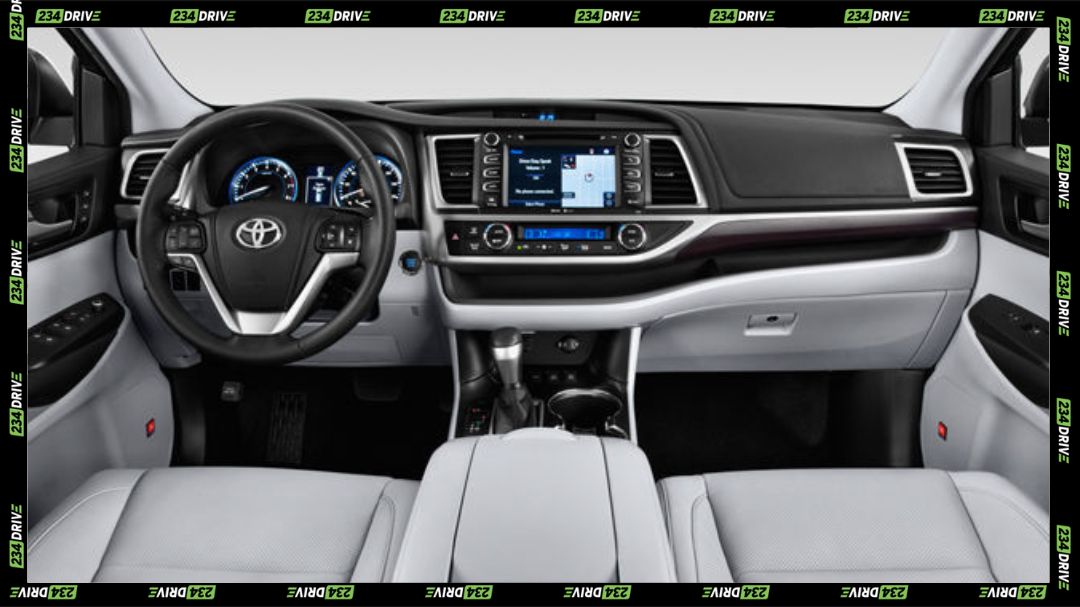
Technology highlights include Toyota’s Entune system with an available 8-inch touchscreen, navigation, Bluetooth, and app integration. The Limited trim adds a premium JBL audio system, though some owners report rattling speakers. Comfort features such as heated and ventilated front seats, tri-zone climate control, and ambient lighting add convenience. Overall, the Highlander excels in family-friendly features, striking a strong balance between practicality and premium appeal.
Performance and Driving Dynamics
The Highlander comes with three engine choices. The base 2.7L inline-four produces 185 horsepower and pairs with front-wheel drive, adequate for light use but underpowered when fully loaded. The more popular 3.5L V6 delivers 270 horsepower, paired with a six-speed automatic transmission, offering strong acceleration (0-60 mph in about 7.3 seconds) and a towing capacity of up to 5,000 pounds. For efficiency-minded buyers, the hybrid variant combines the V6 with electric motors for a net output of 280 horsepower while improving fuel economy to 27 mpg city and 28 mpg highway.
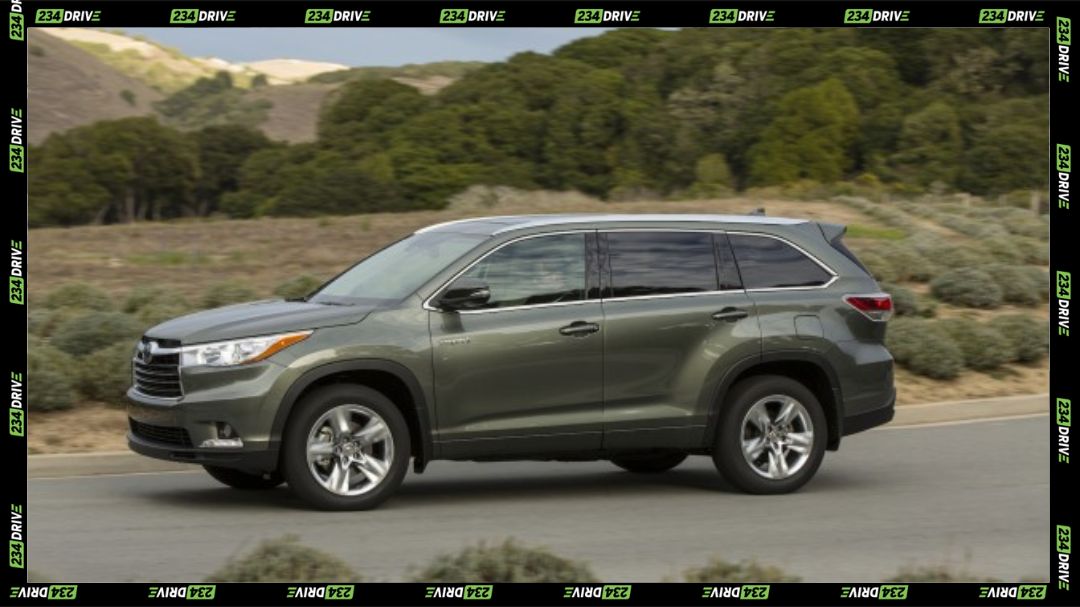
Handling remains stable and composed, with MacPherson strut front suspension and a double-wishbone rear. The Highlander prioritises ride comfort over sporty handling, making it ideal for Nigeria’s mix of paved highways and uneven city roads. Real-world fuel economy averages between 19–22 mpg, a consideration in markets where petrol costs can fluctuate sharply.
Pricing in Nigeria
The Nigerian market for 2014 Highlanders is strong, with prices depending on mileage, trim, and condition. As of current listings:
- Foreign-used (Tokunbo): ₦20 million to ₦33 million
- Nigerian-used: ₦15 million to ₦25 million
Location also affects pricing, with Lagos and Abuja commanding higher averages due to demand. Buyers favour foreign-used imports for their cleaner maintenance history, but thorough inspection for accident history, customs clearance, and hidden modifications remains essential.
Trim Levels and Prices in Nigeria
- LE: 2.7L I4 or 3.5L V6, FWD/AWD, cloth seats, 6.1″ touchscreen, rearview camera — ₦20–25 million
- XLE: 3.5L V6, FWD/AWD, leather seats, sunroof, navigation, heated front seats — ₦23–28 million
- Limited: 3.5L V6, FWD/AWD, premium audio, ventilated seats, blind-spot monitoring — ₦25–33 million
- Hybrid: 3.5L V6 + Electric, FWD/AWD, enhanced fuel economy, regenerative braking — ₦28–35 million (rare)
How it Fits Into Nigerian Roads and Lifestyles
Nigeria’s urban and inter-state travel demands make the Highlander particularly appealing. Its spacious interior suits family and business needs, while Toyota’s widespread service network ensures parts availability. The V6 engine handles heavy loads and highway driving with ease, though fuel consumption can be a concern in regions with rising fuel costs. The hybrid option, while efficient, is rare in Nigeria and may face challenges with specialist maintenance.
Prestige also plays a role. The Highlander commands respect on Nigerian roads, projecting status while remaining practical. Its durability and ease of repair give it an edge in environments where road quality varies and long-distance travel is common.
How It Stacks Up Against Rivals
Compared to the Honda Pilot, the Highlander offers better cabin quality and a smoother ride, though the Pilot has slightly more third-row space. Against the Ford Explorer, the Highlander wins on resale value and long-term reliability, while the Explorer edges it with more advanced tech features at the time. The Hyundai Santa Fe offers stronger styling and lower upfront cost but falls short on durability and resale confidence in Nigeria.
Maintenance costs for the Highlander remain lower than most rivals due to Toyota’s extensive presence in Nigeria. Routine servicing such as oil changes (₦10,000–₦15,000) and tyre replacements (₦50,000–₦100,000 per set) are affordable compared to premium SUVs. This makes the Highlander attractive not just as a family car but also as a long-term investment.
Final Thoughts
The 2014 Toyota Highlander strikes a rare balance of reliability, comfort, and practicality, making it one of the most desirable midsize SUVs in Nigeria. Its strong V6 engine, spacious cabin, advanced safety features, and Toyota’s trusted reputation make it ideal for both families and professionals. While fuel consumption is a drawback, the Highlander’s durability and resale value compensate. For Nigerian buyers seeking a versatile SUV that blends status with long-term dependability, the 2014 Highlander remains a smart choice.
What do you think about the 2014 Toyota Highlander? Would you prioritise its comfort and dependability over its fuel costs? Share your thoughts below.


